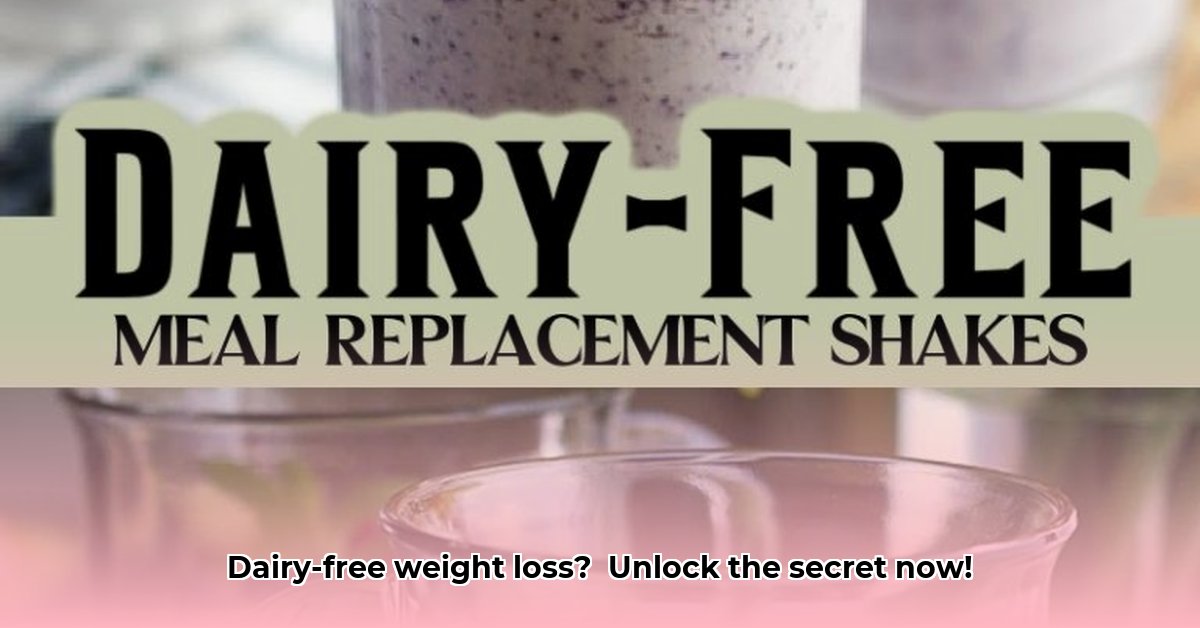
Deciphering the Dairy-Free Protein Shake Label: A Beginner's Guide
Navigating the world of dairy-free protein shakes for weight loss can feel overwhelming. This guide simplifies the process, empowering you to make informed choices. Let's start with understanding those often-confusing nutrition labels. Don't just glance at the numbers; understand what they mean.
First, focus on the macronutrients: protein, carbohydrates, and fats. Aim for at least 20 grams of protein per serving to promote satiety (feeling full). Lower carbohydrate counts generally aid weight loss, while healthy fats contribute to overall well-being. But be wary of added sugars; excessive amounts can hinder your progress. Next, examine the micronutrients – vitamins and minerals. While not always abundant in shakes, a good quality shake can add to your daily intake. Finally, check for potential allergens (soy, nuts, etc.) and the protein source (pea, soy, rice, etc.). Knowing this is crucial for anyone with dietary restrictions or allergies. A shake may list "dairy-free," but it could still contain other allergens.
Exploring Plant-Based Protein Powerhouses: A Deep Dive
Several plant-based proteins power the dairy-free shake market. Each offers unique nutritional benefits and flavor profiles.
Pea Protein: Often prized for its mild taste and hypoallergenic nature, pea protein is a popular choice for many. However, it may not always provide a complete amino acid profile (the building blocks of protein).
Soy Protein: A complete protein, soy protein is generally affordable and widely available. However, be mindful of potential soy allergies. Some find the taste "beany," but many manufacturers enhance flavor profiles.
Brown Rice Protein: Known for its gentle digestibility and hypoallergenic nature, brown rice protein is often a good option for sensitive stomachs. However, it usually has a lower protein content per serving, requiring a larger quantity to meet your protein needs.
Hemp Protein: Along with protein, hemp protein often provides a good source of omega-3 fatty acids, beneficial for overall health. Its slightly nutty flavor might not agree with everyone, and it's often a pricier option.
Choosing the "best" protein is highly personal. Taste, dietary needs, and allergies all play a role. Experiment to discover your perfect match.
Finding Your Perfect Shake: Beyond Protein Content
Selecting your ideal shake involves more than just checking the protein grams. Consider these key factors:
Price per Gram of Protein: Comparing price per gram of protein helps you find the best value for your money. Don't just focus on the total price.
Taste and Reviews: Independent reviews from reputable sources provide invaluable insights into flavor and texture. Trustworthy experts can offer informed perspectives. Search online reviews from credible sources for feedback.
Sustainability: Increasingly, consumers prioritize sustainability. Many companies highlight eco-friendly packaging and ethical sourcing practices. If this matters to you, research accordingly.
Integrating Shakes into Your Weight Loss Plan: A Holistic Approach
Remember: dairy-free protein shakes are a tool, not a magic bullet. They should be part of a comprehensive plan. Relying solely on shakes for weight loss is a recipe for failure.
Calorie Control: Monitor your overall calorie intake. Shakes can contribute to your daily calorie needs, and this should be factored into your overall plan.
Balanced Meals: Prioritize whole foods like fruits, vegetables, and whole grains. Shakes complement, they don't replace these essentials.
Regular Exercise: Combine shakes with a regular exercise routine for optimal results. Exercise remains a cornerstone of a healthy weight loss journey.
Professional Guidance: Consult a registered dietitian or physician before making significant dietary changes, especially if you have pre-existing health conditions. Professional perspectives can guide your choices and minimize potential risks.
Common Pitfalls to Avoid: Learn from Others' Mistakes
Many fall into common traps when using weight loss shakes. Avoid these pitfalls:
Over-reliance on Shakes: Don't neglect wholesome, balanced meals. Shakes should be a supplement, not a replacement.
Ignoring other Nutrients: Ensure you're getting all necessary vitamins and minerals through a balanced diet. Shakes may provide protein, but a well-rounded diet ensures long-term health.
Low-Quality Products: Be wary of cheap shakes loaded with added sugars or artificial ingredients. High-quality ingredients are worth the investment.
"Sustainable weight loss requires a holistic approach," says Dr. Emily Carter, Registered Dietitian at the University of California, San Francisco. "Protein shakes can be a helpful tool, but they should be integrated into a balanced diet and lifestyle."
Your Personalized Dairy-Free Weight Loss Journey
Choosing the right dairy-free protein shake is a personal journey. Your budget, taste preferences, allergies, and overall health goals will guide your selection. Always prioritize reputable brands and consult with healthcare professionals before making significant dietary changes. Remember, long-term success lies in sustainable lifestyle choices.